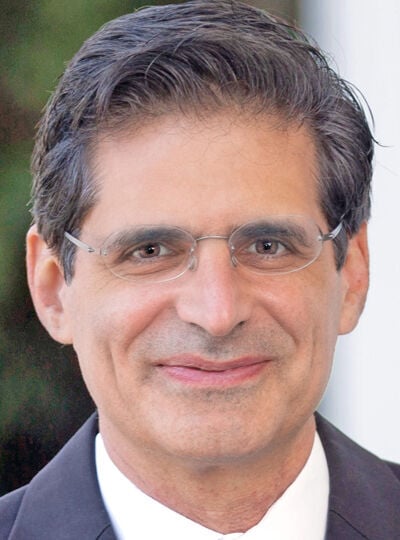As California Gov. Gavin Newsom urges local cities to take more aggressive stances on ending unsheltered homelessness, state Sen. Josh Becker also hopes to address the state’s homelessness crisis with legislation that would mandate assessments of shelter needs.
Becker, D-Menlo Park, had no comment on Newsom’s recent directive that municipalities ban homeless encampments, a continuation from his 2024 executive order directing state agencies to remove such encampments from their properties.
He did acknowledge, however, the palpable frustration that Newsom and others are feeling around the seemingly “intractable” nature of California’s homelessness crisis, emphasizing statistics that show nearly 80% of the state’s homeless population is unsheltered, or not in any transitional facility or temporary housing.
Nationally, only 20% of the homeless population is unsheltered, and in New York City, for example, only 5% of the homeless population is on the streets. California can do better in taking the first step in sheltering homeless individuals, Becker said.
“Unsheltered homelessness is really a California issue,” he said. “It’s the most inhumane and also the most visible. It's a visible sign of the failure of our policies.”
The primary goal of Senate Bill 606, the legislation Becker introduced, is for counties and other jurisdictions applying for homelessness funding to have tangible plans for eliminating unsheltered homelessness in their communities. If the legislation passes, applicants to California’s Homeless Housing Assistance and Prevention Program — the primary funding source for homelessness solutions — would be required to detail steps they’ve taken to construct interim housing units and assess how close their community is to achieving ‘functional zero unsheltered.’
The term functional zero unsheltered refers to when an area has enough shelter beds for the entirety of its homeless population, ostensibly so that no individuals need to be residing in tents, cars or RVs on the street.
“It doesn't mean no one's going to fall into homelessness,” Becker said. “People will fall, but then you can take those people and bounce them back and get them help, rather than wait six to 12 months later, when they're much more acute.”
When cities are able to bring homeless individuals into shelter, service providers have a higher chance of stabilizing them and getting them back on their feet more quickly, Becker said. He cited interim modular units as one successful and inexpensive model of shelter that cities around the state could use.
While the need for California to address its homelessness crisis is undisputed, Newsom’s increasingly aggressive approach to encampment removal has drawn reproach from some advocates, who say the state needs to first address root causes of homelessness — like the exorbitantly high cost of living.
In San Mateo County, homelessness service provider LifeMoves said in a statement that encampment enforcement must be paired with wraparound services to be effective.
“LifeMoves shares the urgency behind Governor Newsom’s push to address homelessness, and we serve thousands of Californians every day in pursuit of that goal. We also know from experience that enforcement alone won’t solve this crisis,” spokesperson Maria Prato said in an email. “Addressing encampments must be coupled with local prioritization of the housing, behavioral health care and supportive services that are both necessary and proven to help our unhoused neighbors reclaim their future.”
County officials said previously that Newsom’s push to criminalize unsheltered homelessness would have little impact on their jurisdiction, as the Board of Supervisors passed a 2024 ordinance that those illegally camping on public property in the areas could be charged, but would be eligible for diversion programs.
That ordinance is only applicable in unincorporated areas of San Mateo County. Local cities would have to pass city-specific ordinances for Newsom’s directive to ban homeless encampments to be applicable in their communities.


























(1) comment
We already know spending over $20 billion on the homeless problem has only led to more homeless people so as long as residents are not asked for more tax money, try whatever approach one can think of. Meanwhile don’t be surprised if more states ship their homeless to California. Regardless, a reminder to vote NO on any measures asking for more of your hard-earned money to fund the homeless industrial complex.
Welcome to the discussion.
Log In
Keep the discussion civilized. Absolutely NO personal attacks or insults directed toward writers, nor others who make comments.
Keep it clean. Please avoid obscene, vulgar, lewd, racist or sexually-oriented language.
Don't threaten. Threats of harming another person will not be tolerated.
Be truthful. Don't knowingly lie about anyone or anything.
Be proactive. Use the 'Report' link on each comment to let us know of abusive posts.
PLEASE TURN OFF YOUR CAPS LOCK.
Anyone violating these rules will be issued a warning. After the warning, comment privileges can be revoked.